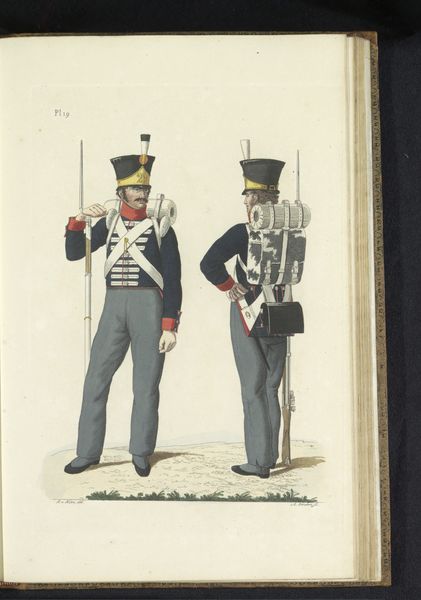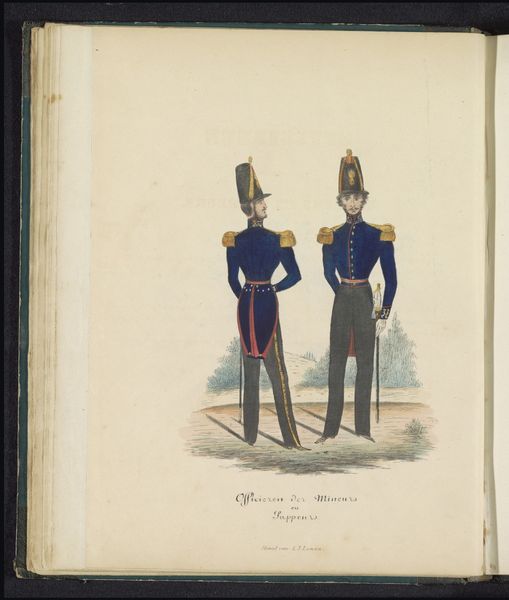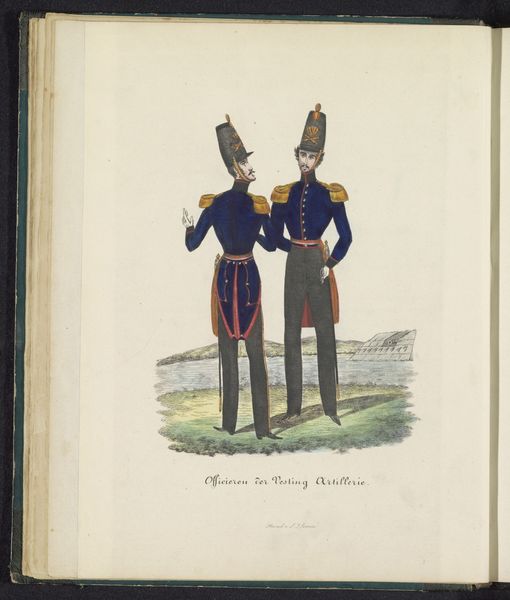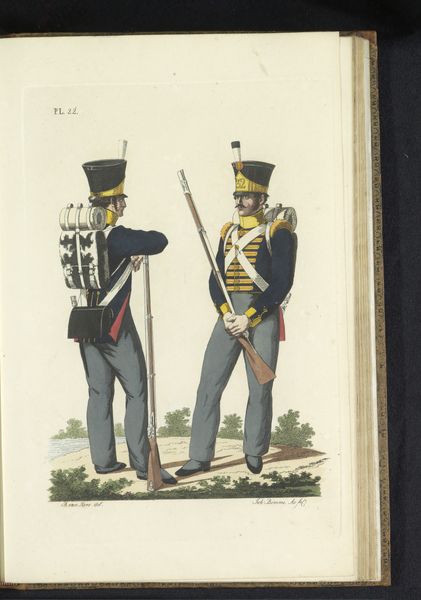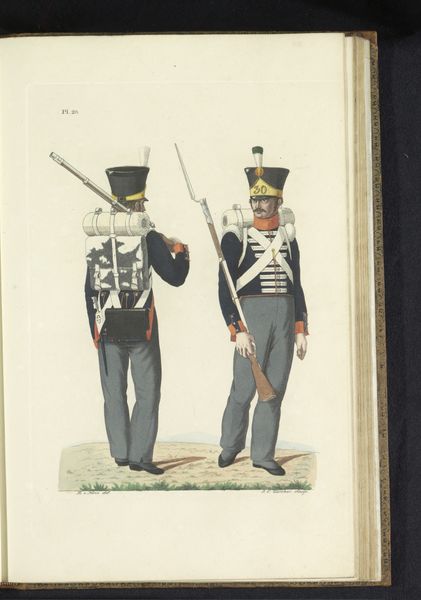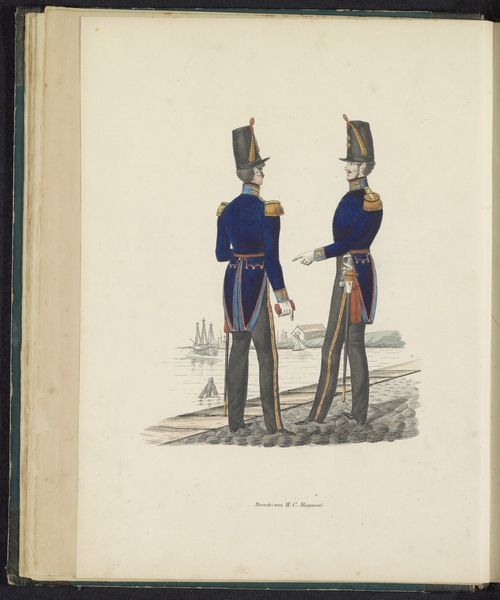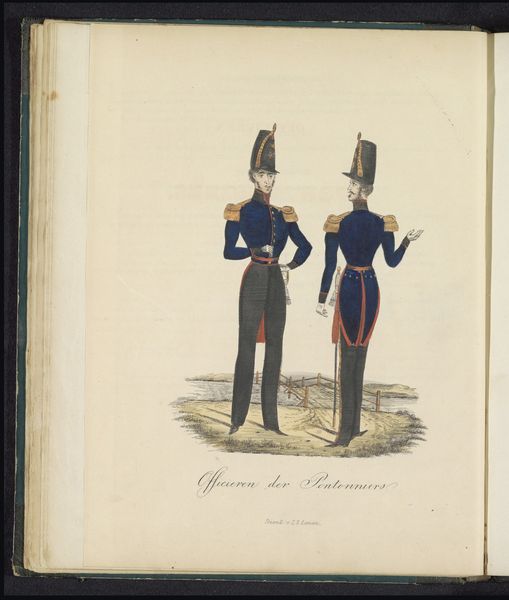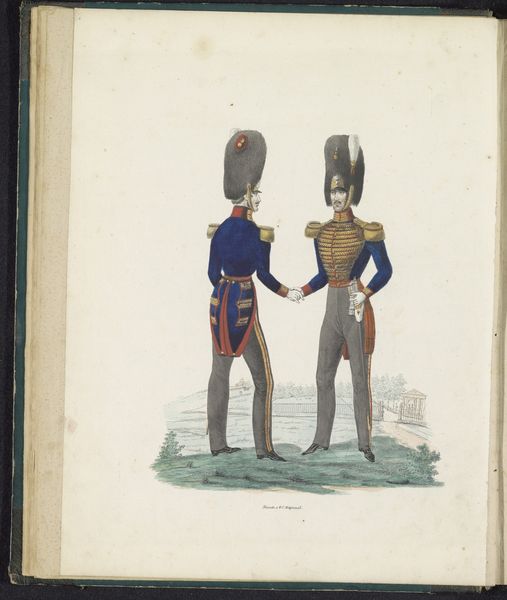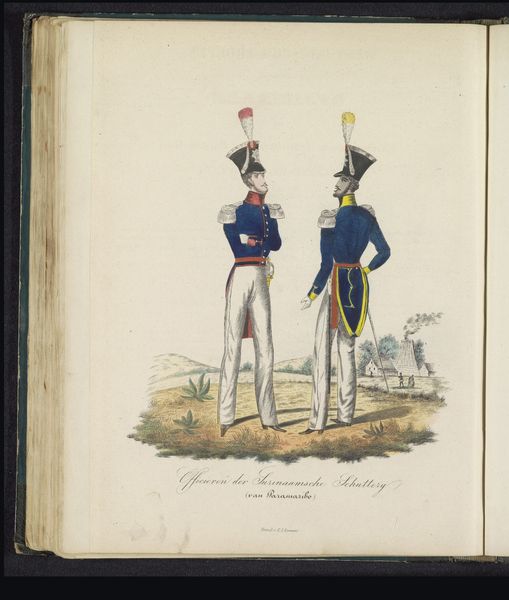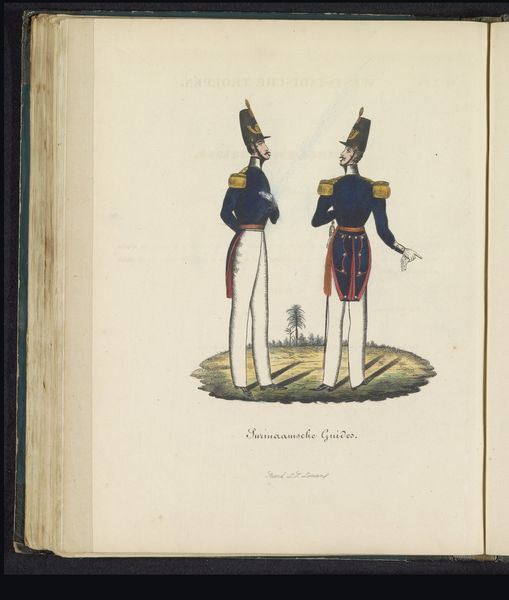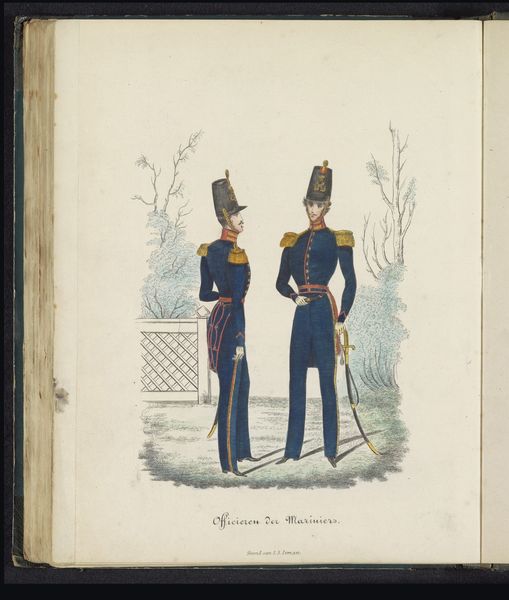
drawing, coloured-pencil
#
portrait
#
drawing
#
coloured-pencil
#
coloured pencil
#
academic-art
Dimensions: height 300 mm, width 205 mm
Copyright: Rijks Museum: Open Domain
Editor: So, this coloured pencil drawing, "Soldaat en Trompetter, te voet, Artillerie-Trein," created in 1823 by Abraham Lion Zeelander, feels incredibly precise. I'm struck by the detail in the uniforms. What can you tell me about its historical context? Curator: This meticulous depiction speaks volumes about the period's interest in documentation and perhaps, idealization of military life. These types of studies became important historical records. Consider the socio-political climate of the 1820s. Europe was in a post-Napoleonic era, with various powers re-establishing themselves and military structure, imagery, and public display were essential components. This wasn't just about artistic expression; it was about defining power. What purpose do you think such a work would serve in this context? Editor: I guess it's meant to communicate military order and the role of the army within a restored political system. To display them and the restored order that came with them. Is that why they look kind of… idealized? Curator: Precisely! Academic art of this period often sought to present an elevated view of its subjects, reinforcing prevailing social structures. These drawings, in particular, would be used as source material for official records of the different army units in this period. What do you notice about the composition and how it directs our understanding of the figures' roles within a political or social narrative? Editor: They are prominently placed, full of swagger! Also, they appear individually but in tandem, to indicate each position in their hierarchy. And because they look so crisp, it's not about the brutality of war, but a very controlled role of each participant. I hadn't considered how images can play such a huge role in the politics of the day. Curator: It's about visual propaganda! That images shape perceptions. I wonder how audiences then would see that vs. what we see. Editor: I've learned to consider not just the "what" but the "why" and the "who for" and how those interact with the artist and viewer. Thanks.
Comments
No comments
Be the first to comment and join the conversation on the ultimate creative platform.
